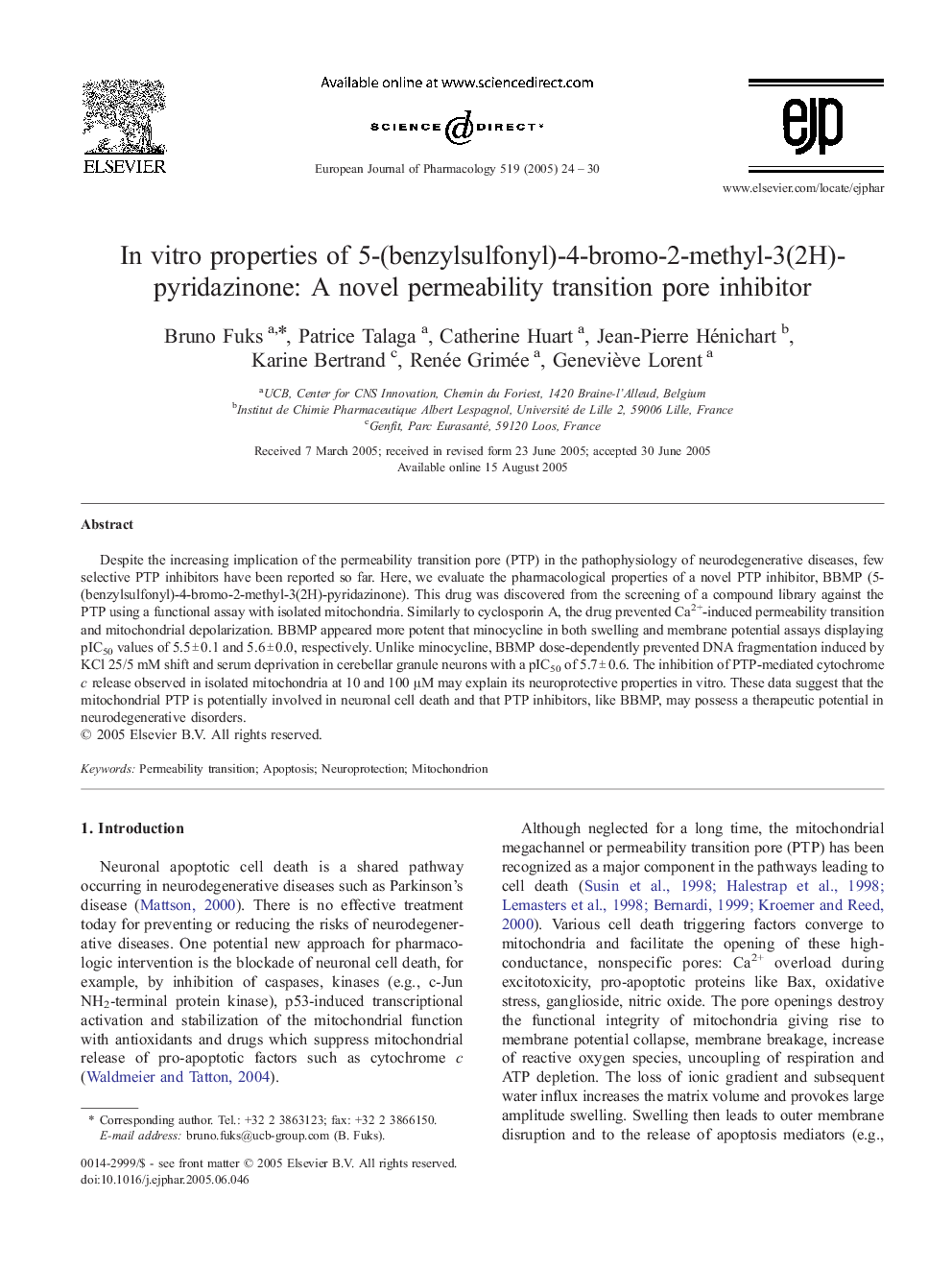| کد مقاله | کد نشریه | سال انتشار | مقاله انگلیسی | نسخه تمام متن |
|---|---|---|---|---|
| 9921152 | 1559204 | 2005 | 7 صفحه PDF | دانلود رایگان |
عنوان انگلیسی مقاله ISI
In vitro properties of 5-(benzylsulfonyl)-4-bromo-2-methyl-3(2H)-pyridazinone: A novel permeability transition pore inhibitor
دانلود مقاله + سفارش ترجمه
دانلود مقاله ISI انگلیسی
رایگان برای ایرانیان
کلمات کلیدی
موضوعات مرتبط
علوم زیستی و بیوفناوری
علم عصب شناسی
علوم اعصاب سلولی و مولکولی
پیش نمایش صفحه اول مقاله

چکیده انگلیسی
Despite the increasing implication of the permeability transition pore (PTP) in the pathophysiology of neurodegenerative diseases, few selective PTP inhibitors have been reported so far. Here, we evaluate the pharmacological properties of a novel PTP inhibitor, BBMP (5-(benzylsulfonyl)-4-bromo-2-methyl-3(2H)-pyridazinone). This drug was discovered from the screening of a compound library against the PTP using a functional assay with isolated mitochondria. Similarly to cyclosporin A, the drug prevented Ca2+-induced permeability transition and mitochondrial depolarization. BBMP appeared more potent that minocycline in both swelling and membrane potential assays displaying pIC50 values of 5.5 ± 0.1 and 5.6 ± 0.0, respectively. Unlike minocycline, BBMP dose-dependently prevented DNA fragmentation induced by KCl 25/5 mM shift and serum deprivation in cerebellar granule neurons with a pIC50 of 5.7 ± 0.6. The inhibition of PTP-mediated cytochrome c release observed in isolated mitochondria at 10 and 100 μM may explain its neuroprotective properties in vitro. These data suggest that the mitochondrial PTP is potentially involved in neuronal cell death and that PTP inhibitors, like BBMP, may possess a therapeutic potential in neurodegenerative disorders.
ناشر
Database: Elsevier - ScienceDirect (ساینس دایرکت)
Journal: European Journal of Pharmacology - Volume 519, Issues 1â2, 5 September 2005, Pages 24-30
Journal: European Journal of Pharmacology - Volume 519, Issues 1â2, 5 September 2005, Pages 24-30
نویسندگان
Bruno Fuks, Patrice Talaga, Catherine Huart, Jean-Pierre Hénichart, Karine Bertrand, Renée Grimée, Geneviève Lorent,